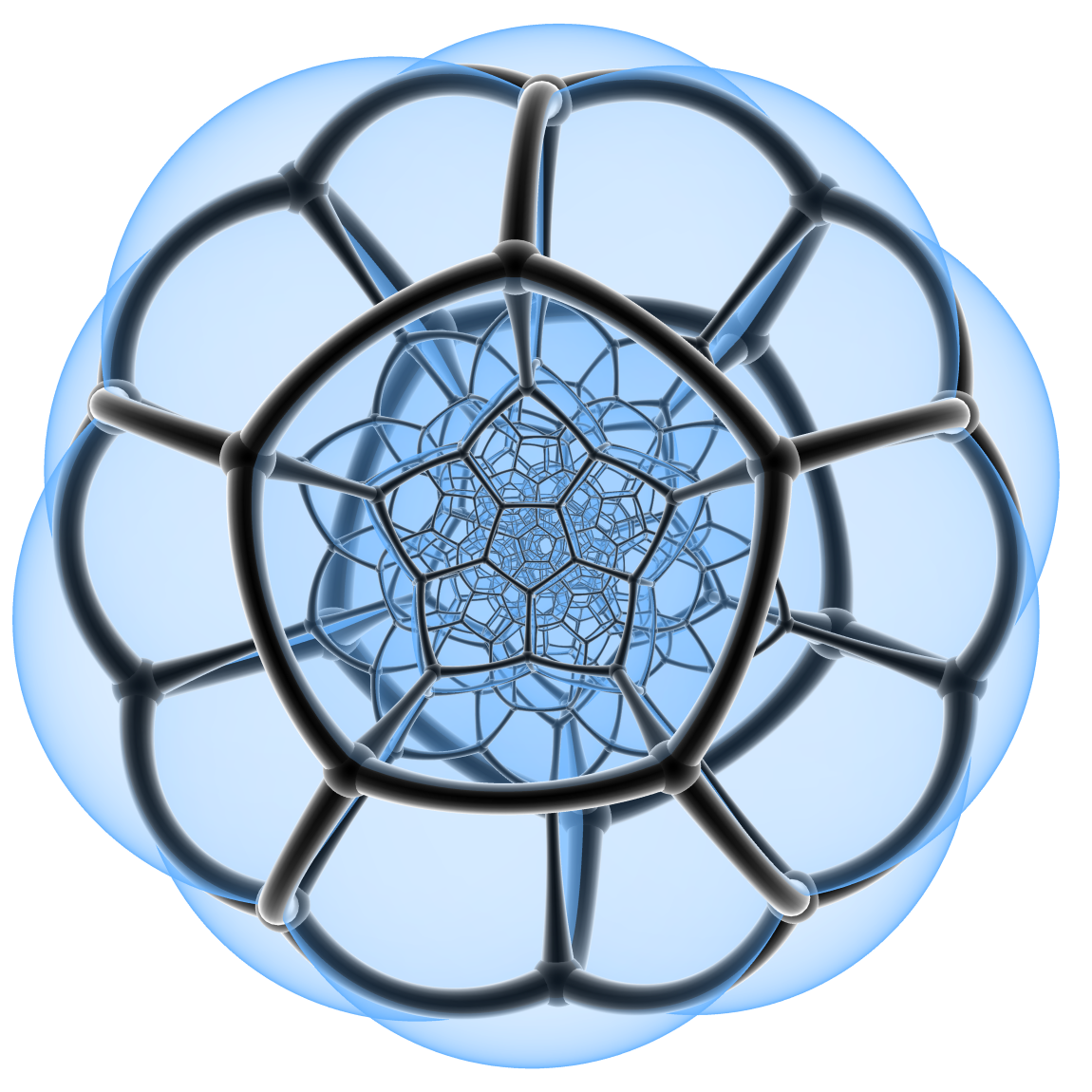

Director of the Center
(This page is like a cathedral: always under reconstruction ;-)
(While under construction, please be patient: more details will follow
during the semester.)
Time and Place:
Mon & Wed 2:30-3:45 in LGRC A301 (3rd floor of the Lederle lowrise,
near the Physical Sciences Library)
Office Hours:
After class Mon (3:45-5:00 starting in LGRC A301 and migrating up to
LGRT 1435G or 1535); before class Wed (noonish-2:15 in LGRT 1435G or
1535); and in any event, please make an appointment via email:
profkusner@gmail.com
Prerequisites:
Multivariable Calculus and Linear Algebra
Recommended Text:
J. Marsden and A. Tromba, Vector Calculus [an earlier edition is fine
and may be less expensive: W. H. Freeman, Fifth Edition edition
(2003) ISBN-10: 0716749920, ISBN-13: 978-0716749929; or Sixth Edition (2012) ISBN-10: 1-4292-9411-6, ISBN-13: 978-1-4292-9411-9]
H. M. Schey, div, grad, curl and all that [ISBN-13: 978-0393925166;
ISBN-10: 039 3925161]
M. Spivak, Calculus on Manifolds [ISBN-13: 978-0805390216; ISBN-10: 0805390219]
Description:
This course covers the basics of differential and integral calculus in
many variables: differentiability, directional and partial derivatives
and gradient of functions; critical points without or with constraints
(Lagrange-multipliers/tangential-gradient) and the Hessian; vector
fields and differential forms; divergence, curl and exterior
derivative; line- and surface-integrals; the fundamental theorem of
calculus (Gauss/Green/Stokes/Thomson). If time and taste permit,
topics from physics (fluids and electromagnetism) and differential
geometry (curves and surfaces in space) may also be explored.
Grading:
Course grades will be based in roughly equal parts on the homework, on
in-class midterm/quizzes, and on the final exam.
Topic and Homework Schedule (please finish and submit within
14 days of the date at the left; if you work together, be good
scholars and name your collaborators):
09/04: Locate and try to classify (as maxima, minima, saddles...) all
the critical points on the topographic map of the Norwottuck region
that I shared in class Wednesday. A more interesting problem is to
locate some (rather long) contour that forms a simple loop (closed
curve which does not self-intersect) on the map, and count the numbers
of maxima, minima and saddles on the region inside; do this for
several such loops (using at least one other map) and see if you can
discover a relation for these numbers. Of course, the weather is
splendid, so you may also use this map to
... Go
Take a Hike!
09/11:
Derivatives, Critical Points and Convexity.
Advanced Multivariate Calculus (Math 425.2) Fall 2017
Solutions by Cass Kornhiser (page 1) and (page 2).
09/18:
Integrals, Volumes and Centers of Mass.
Solutions by Thom Barron (page 1)
and (page
2); a
different solution
to Problem 2 by Dan Weber;
more solutions by Alex Hargrove (page
1), (page
2), (page
3) and (page
4).
09/25: Holiday Homework Hiatus: the next set is due 10/16!
10/02:
Gradient, Divergence and Laplacian in n-space
Solutions by Kate Donoghue (page
1),
(page
2),
(page
3),
(page 4). [For Problem 2, the behavior at the origin - the minimum
of r - is singular: while the "average" of grad(r) may be 0 there,
this vectorfield is not well-defined because r is not differentiable
(it fails to have a linear approximation - its graph has a tangent
"cone" rather than a tangent plane) at the origin; the set of limit
values for grad(r) as r tends to 0 is the whole (n-1)-sphere of unit
vectors in R^n.]
10/09: Curling Vectorfields on R^3
Solutions by Derek
Enlow,
Henry Phan (page
1), (page
2), (page
3),
Alex Hargrove (page
1), (page
2), (page
3)
and
Kate Donaghue (page
1), (page
2). [For Problem 4, it is nice that the algebraic formula for
iterated cross product A × (B × C)=B(A•C)-C(A•B) works,
but one must use care to justify this, and it can be misleading when
the Leibniz/product rule comes into play, e.g. for expanding curl(v
× w).]
10/16: Another HW hiatus [you guys had a lot of other midterms, so I figure the HW and self-assessed quizzes have been enough for now].
10/23: Practice with Path Integrals
Solutions by Thom Barron, (page 2) and Kate Donaghue.
10/30: Fun
with Forms [This set is due Wed 15 Nov!!! Please see M&T
section 8.6 or Spivak for more 'fun' with forms; you may also try
these
older Fun with Forms problems, but no need to turn them in - there
are a few "write-os" which I hope you can figure out.]
Solutions by Kate Donaghue,
(page 2);
by Wilson Y. Wang,
(page
2), (page
3);
and
by Alex Hargrove, (page
2), (page 3).
11/06: Domains and Forms in n-Space [This (along with the following hand-written material) is from my course last year and is to be worked on over the long Thanksgiving Break! Please try them, especially Problems 3 & 4, and turn them in for extra credit.]
11/13: Practice with Differential Forms [This is also from my course last year and is also to be worked on over the long Thanksgiving Break! These really are for practice, so it will be smart if you try them, but no need to turn them in!]
11/20: Even more for the long Thanksgiving Break! Div, Grad, Curl via Hodge and Music; Pullbacks and Naturality, (page 2), (page 3) - these WILL be to turn in (in 2 weeks, i.e. 12/04)!
On page 3 the goal is to deal with a k-form \beta on R^n, and its
pullback F*\beta to the m-cube Q^m via a smooth map F:Q^m -> R^n.
[Sorry for the write-os there (I meant to keep k and m distinct), but
I hope you can sort that out. In particular, as a warm-up to the
general case, try finishing the special case (k=1, m=2, n=3) of the
"naturality" formula d(F*\beta)=F*(d\beta) we began in class where
\beta=xdx+ydy+zdz and F(s,t)=(s,t,sin(s)sin(t)); then try more general
cases to see what's going on.]
Solutions by Thom Barron and by Kate Donaghue, (page 2). [Technically, the last problem should have been done with a nonconstant function f in front of a basic form, but we gave full credit for checking 0=0.... ;-]
We talked about this briefly in class, and my notes above touch on it
too, but here's
more about Hodge-star. Cf. also Spivak (page 96, problem 4-19)
for an alternative to "music" and Hodge-star for treating div, grad &
curl in terms of "d" in \R^3. [Hint for the last problem: it may help
to first observe that F*(\alpha∧\beta)=F*(\alpha)∧
F*(\beta), which one proves first for basic forms.... In class on 11/29 we
considered a warm-up problem: using the polar coordinates map
F:\R^3 -> \R^3: F(r,\theta,\phi)=(r cos\theta cos\phi, r sin\theta
cos\phi, r sin\phi), compute F*(dx∧dy∧dz): it will be a
function times dr∧d\theta∧d\phi.]
The last part of the course concerns integral calculus with forms. We've already done a bit of this with 1-forms and path integration, but over the Thanksgiving Break, please study Spivak chapter 4, especially pages 86-108. Please try to understand "pullback" - which is the forms version of the "change of variables" formulas you may have seen in M&T 6. Also, please try to understand the notion of a "singular k-chain" over which we'll integrate a k-form - this generalizes a path integral to higher dimensions and is the natural way to set up the Fundamental "Stokes" Theorem of Calculus (FToC).]
11/27: Integration of k-forms over k-cubes and k-chains [Note: In problems 3 and 4, the domain Q is a stretched/translated version of the 2-cube: one is [0,2\pi]×[-\pi/2,\pi/2] and the other is [0,2\pi]×[0,2\pi]. And sorry: the scanner inserted a couple of "backsides" - there are only 5 pages, not 7! ;-]
[[Further comments: In problem 1, technically we're restricting everything to S, which can also be thought of as pulling back by the inclusion of S into \R^3. In problem 4, there's a "writing" error: it should be x(s,t)=(R + r cos(t))cos(s), y(s,t)=(R + r cos(t))sin(s) and z(s,t)=r sin(t).]]
Solutions by Rob.
12/04: The Big FToC [Again, sorry: the scanner duplicated and "wiggled" a couple pages - I hope there's at least one clear version of each page! You should try some explicit choices of V=\alpha^# or V=\star\beta^# in problems 3, 4 and 5 to be sure of what you're doing. My favorite examples are constant (translation) vector fields like V=(1,0,0), rotation vector fields like
V=(y,-x,0), and the position vector field V=(x,y,z)!]
Solutions by Rob.
FINAL EXAM:
The SPIRE schedule indicates 3:30-5:30 Wednesday 20 December in ILC
S140, which is the very last exam session. By popular demand, the
alternative plan is to hold the exam in our classroom LGRC A301
2:30-4:30 Wednesday 13 December, and also to hold homework/review
sessions in our classroom 2:30-4:00 Friday 8 and Monday 11
December (our room IS available and reserved for us).
Anyone who needs more time for the exam, or for whom this alternative time
poses a problem, MUST email me BEFORE Friday 8 December to arrange an
accommodation.
To be clear, the default time and place for the exam is the original: 3:30-5:30 Wednesday 20 December in ILC
S140.
[You may bring a two-sided "help sheet" prepared by yourself in your own handwriting. About half the exam topics (integration, mainly) will be from after the midterm, but earlier topics (div, grad, curl and their interpretation using forms) naturally feed into the latter topics.]
Have a wonderfully warm winter solstice and a perfectly pleasant perihelion!
